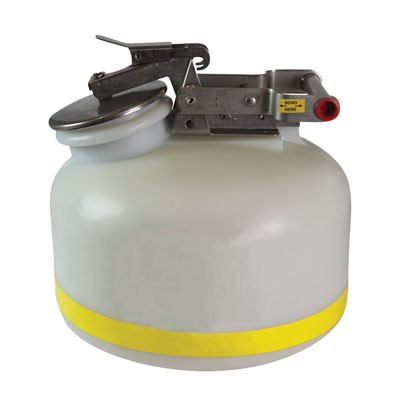Recognizing the Comprehensive Refine of Fluid Garbage Disposal: Ideal Practices and Environmental Effect Considerations
The monitoring of fluid waste disposal is a diverse concern that calls for a comprehensive understanding of different best methods and their associated ecological effects. From the types of liquid waste produced to the methods utilized for collection, therapy, and final disposal, each step plays a critical duty in securing environments and public health and wellness.
Sorts Of Fluid Waste
Understanding the numerous kinds of liquid waste is necessary for effective monitoring and disposal methods. Liquid waste can be extensively classified into numerous kinds, each calling for distinct handling and therapy methods.
Industrial fluid waste frequently consists of dangerous materials, consisting of heavy metals, solvents, and chemicals, produced during producing procedures. These wastes necessitate stringent regulative conformity to protect human health and wellness and the environment. Residential fluid waste largely describes wastewater produced from households, including sewage and greywater, which, although less hazardous, can still position substantial dangers if poorly handled.
Agricultural fluid waste, including runoff from ranches, usually has fertilizers and pesticides that can lead to environmental degradation otherwise treated effectively. Clinical fluid waste, generated from health care centers, includes polluted liquids such as bodily liquids and chemicals, needing specialized disposal methods to avoid infection and ecological contamination.
Last but not least, oil and oil waste, commonly generated by dining establishments and automotive sectors, can create severe blockages in sewage system systems if not taken care of properly. Understanding these classifications facilitates targeted techniques for therapy, compliance with policies, and effective disposal techniques, eventually advertising ecological sustainability and public health safety.

Collection Approaches
Effective collection approaches are critical for the correct monitoring of fluid waste, making sure that it is gathered safely and effectively prior to therapy or disposal. Numerous strategies are utilized depending upon the type of fluid waste generated, the volume, and the details features of the waste.
One usual approach is the usage of committed collection containers or sumps, which are created to capture liquid waste at the source. These systems typically incorporate pumps that assist in the transfer of waste to larger storage containers or treatment facilities. In addition, mobile collection systems furnished with vacuum innovation are utilized in circumstances where waste is generated periodically or in hard-to-reach places.
For commercial settings, closed-loop systems can efficiently reduce spills and leaks, permitting the healing and reuse of fluid waste. It is likewise necessary to educate employees on appropriate collection procedures to minimize threats connected with hazardous compounds.
Moreover, implementing regular upkeep schedules for collection equipment ensures optimal efficiency and security. The assimilation of sophisticated tracking systems can boost collection performance by providing real-time data on waste levels and possible risks. On the whole, effective collection methods are fundamental to lasting fluid waste monitoring methods.
Therapy Procedures
Treatment procedures play an important duty in the management of liquid waste, transforming possibly dangerous products right into reusable resources or safe effluents - liquid waste disposal. These procedures can be broadly classified right into physical, chemical, and biological approaches, each tailored to attend to particular impurities present in the waste stream
Physical therapy approaches, such as sedimentation and purification, job by getting rid of put on hold solids and particulate matter. These techniques are commonly the initial step in the therapy chain, properly lowering the tons on subsequent processes. Chemical treatments entail using reagents to counteract damaging materials, precipitate heavy steels, or oxidize organic pollutants, therefore improving the safety of the effluent.
Organic treatment procedures, consisting of turned on sludge systems and anaerobic digestion, exploit on the natural capacities of microbes to deteriorate raw material. These techniques are particularly reliable for wastewater including biodegradable contaminants. Advanced therapy technologies, such as membrane layer filtration and advanced oxidation procedures, are increasingly used to achieve greater degrees of filtration.
Integrating a combination of these therapy approaches not only makes sure compliance with regulatory requirements yet likewise advertises environmental sustainability by recovering useful sources from liquid waste.
Disposal Options
Exactly how can companies make certain the risk-free and accountable disposal of liquid waste? Efficient disposal alternatives are important for safeguarding public health and the environment. The primary techniques include land therapy, disposal, and incineration followed by discharge into municipal wastewater systems.
Land disposal involves the cautious containment of liquid waste in assigned garbage dumps, making sure that it does not leach into surrounding soil or water. Incineration, on the various other hand, topics fluid waste to heats, transforming it right into ash and gases, which need correct purification to lessen exhausts. This approach appropriates for harmful wastes that can not be dealt with via conventional methods.
In situations where liquid waste can be treated, companies may go with chemical or organic treatment processes to reduce the effects of unsafe parts prior to releasing the dealt with effluent into metropolitan systems. This path normally straightens with regulative demands, guaranteeing that the effluent fulfills security requirements.
Ultimately, companies need to carry out detailed evaluations of each disposal option to establish its feasibility, considering factors such as waste make-up, regulative compliance, and prospective dangers to health and the atmosphere. By selecting proper disposal techniques, companies can add wikipedia reference to an accountable waste management method.
Environmental Impact
The my latest blog post ecological influence of fluid waste disposal is an important factor to consider for companies looking for to reduce their eco-friendly impact. Additionally, the discharge of neglected or improperly dealt with waste into surface waters can result in eutrophication, leading to oxygen exhaustion and the succeeding death of fish and various other microorganisms.

To mitigate these influences, companies have to take on finest techniques such as applying strenuous waste therapy processes, advertising recycling and reuse, and sticking to governing requirements. By taking a proactive approach to fluid waste administration, entities can significantly reduce their ecological footprint while sustaining lasting advancement goals. Inevitably, a detailed understanding of the ecological influences related to liquid garbage disposal is crucial for educated decision-making and accountable stewardship of natural sources.
Conclusion
Effective administration of liquid waste is essential for safeguarding ecological stability and public health and wellness. By adopting ideal methods in collection, treatment, and disposal, alongside adherence to governing requirements, the capacity for damaging contamination of communities can be considerably reduced. Continual improvements in technology and procedures add to lasting waste monitoring efforts. Inevitably, an extensive understanding of fluid waste disposal not only minimizes environmental effects but likewise fosters a dedication to responsible resource monitoring and environmental stewardship.
The monitoring of fluid waste disposal is a multifaceted problem that requires a comprehensive understanding of different ideal techniques and our website their linked ecological influences. From the types of liquid waste generated to the techniques utilized for collection, therapy, and last disposal, each action plays a crucial function in guarding ecosystems and public health.The environmental impact of fluid waste disposal is a critical consideration for organizations looking for to decrease their eco-friendly footprint. Ultimately, an extensive understanding of the environmental impacts linked with liquid waste disposal is vital for notified decision-making and accountable stewardship of natural resources.
Ultimately, a comprehensive understanding of liquid waste disposal not just minimizes environmental influences yet additionally promotes a commitment to liable resource administration and ecological stewardship.